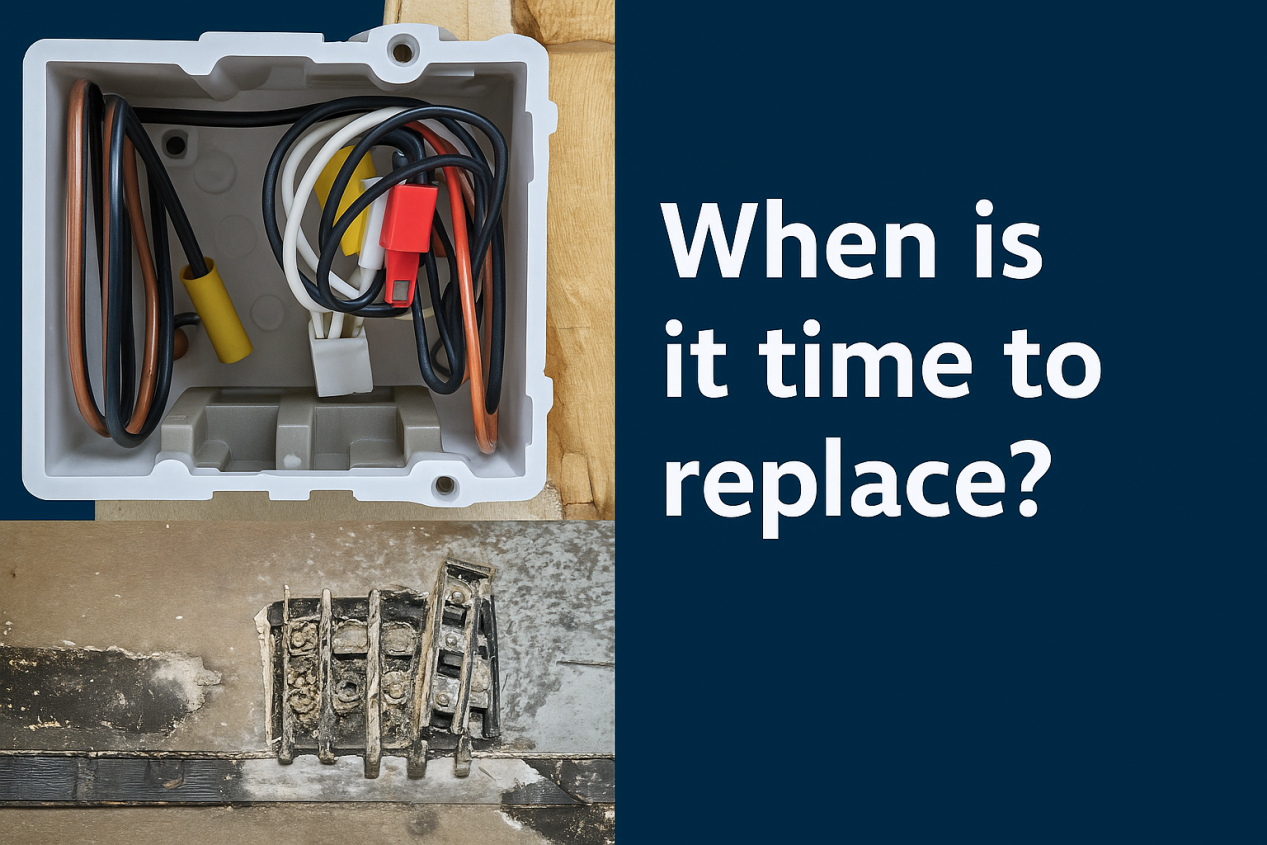Expert Safety Guide from Togalonn – UL Certified Electrical Box Manufacturer
The central component of your home's electrical system is the electrical box, sometimes referred to as a breaker panel. In addition to distributing power throughout each area, it guards against overloads and short circuits in your wiring and equipment.
However, what if your panel is hazardous, out-of-date, or no longer compliant?
Togalonn specializes in UL-certified electrical boxes and components that are proudly manufactured in the USA, offering safe, code-compliant solutions to homeowners, builders, and contractors.
In this guide, we’ll cover 10 critical warning signs that it’s time to replace your electrical box — plus safety tips and how to choose the right replacement panel.

Explore More Togalonn's product.
Table of Contents
- Frequent Circuit Breaker Tripping
- Burning Smell or Scorch Marks
- Outdated Material (e.g., Aluminum Wiring)
- Rust or Corrosion
- Overheating
- Loose or Sparking Wires
- Physical Damage
- Insufficient Capacity for Modern Loads
- Non-Compliant with Current Codes
- Age (Over 20 Years Old)
- Tips for Choosing a Replacement
- Safety Precautions
Frequent Circuit Breaker Tripping
If your breakers trip regularly when utilizing appliances, your panel may be overcrowded, inadequate, or decaying. This is a clear sign it can no longer securely handle your home’s energy consumption.
Why It's Risky:
Frequent tripping is a sign of a malfunctioning box or overloaded circuits. Overheating can melt wires and start fires if left unchecked. Shock risks are increased by older boxes' lack of arc-fault protection.
Solution:
Upgrade to a 200-amp panel (standard for modern homes).
Install AFCI/GFCI breakers (required by NEC for new builds).
Burning Smell or Scorch Marks

Serious warning signs include scorch marks, melted plastic, or a burning smell close to your panel or outlets. This typically indicates internal arcing, insulation breakdown, or overheated wires.
Why It's Risky:
Arcing or short circuits, which cause scorching, can set adjacent objects on fire.
Live wires may be exposed by warping plastic boxes.
Action Plan:
Turn off the electricity right away.
Look for burnt terminals or melted insulation.
Replace with a metal or fire-rated box (e.g., Togalonn’s steel models).
Outdated Material (e.g., Aluminum Wiring)

Homes built before 1975 may include aluminum wire, which is no longer common due to oxidation risks and poor conductivity. Aluminum wiring boxes or panels should be replaced.
Why It's Risky:
Sparks and fires may result from loosening connections caused by aluminum's expansion and contraction. Older boxes' lack of anti-oxidation paste accelerates deterioration.
Fix:
Rewire with copper or use CO/ALR-rated boxes (compatible with aluminum).
Apply antioxidant to terminals.

Rust or Corrosion
Why It's Risky:
Hot spots are caused by the poor electrical conductivity of rust.
Moisture intrusion can cause electrocution or ground faults.
Prevention:
Use PVC or galvanized steel boxes in damp areas.
Seal conduits with waterproof fittings.
All Togalonn electrical enclosures are made with anti-rust, ideal for both indoor and outdoor use.

Overheating
Does your panel have a humming sound or feel hot to the touch? It might be operating above acceptable temperature limits, particularly if it is overloaded or wired incorrectly.
Why It’s Dangerous:
Heat degrades insulation, exposing bare wires.
Sustained >90°F temperatures can warp breakers.
Cooling Tips:
Install ventilated panels or spacing between wires.
Avoid daisy-chaining high-load appliances.

Loose or Sparking Wires
Sparking and loose wires pose an immediate risk of electrocution and fire. Poor installation, deterioration over time, or unsuitable parts can all cause sparks.
Why It’s Dangerous:
Panel ignition
Voltage surges
Electric shock hazards
Warning:
Never touch a sparking panel. Shut off power and contact a professional.

Physical Damage
Your electrical system's integrity is jeopardized by warped doors, exposed wires, missing covers, and cracks. Dust, water, or vermin are drawn inside the box by even minor physical damage.
Why It’s Dangerous:
Cracks expose wires to pests or moisture.
Crushed boxes pinch cables, creating shorts.
Replacement Guide:
NEMA 4X-rated enclosures are suitable for outdoor use.
For areas with heavy impact: 1.5mm+ steel structure.
*Every Togalonn enclosure is sealed and impact-resistant to shield your system from outside harm.

Insufficient Capacity for Modern Loads
Older panels (60A–100A) can’t support today’s power-hungry devices like EV chargers, HVAC units, smart home systems, and kitchen appliances.
Why It’s Dangerous:
Flickering lights
Tripped breakers during peak usage
Permanent wire damage
Solution:
Upgrade to a 200A or 400A panel with room for expansion.
Non-Compliant with Current Codes
Your house may fail inspections or face insurance denial in the event of a claim if your panel does not adhere to the most recent NEC (National Electrical Code) regulations.
Why It’s Dangerous:
Unlisted boxes may lack fault current ratings, failing during surges.
Compliance Checklist:
Verify UL 67 or NEMA certification.
Match local amendments (e.g., California’s Title 24).

Age (Over 20 Years Old)
In general, breakers endure 20 to 30 years. Following that, parts deteriorate, codes alter, and energy requirements increase.
Signs of age:
Rusty screws or connectors
Discolored wires
Frequent nuisance tripping
If your panel is over 20 years old, it’s time for a full evaluation.
Tips for Choosing a Replacement
When choosing a new electrical box, consider:
Amperage Requirements: To future-proof your house, choose for 200A+
UL Certification: Use only approved parts
Panel Slots: Make sure there is adequate space for future growth
Material Quality: Seek out designs that are ready for copper and enclosures that are resistant to corrosion.
Made in the USA: Have faith in responsible, local production
Choose Togalonn – America’s trusted UL-listed electrical box brand.
See our full lineup: www.togalonn.com/products
Safety Precautions
Avoid attempting to change your panel on your own
Always collaborate with a certified electrician
Before inspecting, turn off the main power
After installation, clearly label the circuits
Where necessary, install GFCI/AFCI protection

Final Thoughts: Your Safety Starts Here
It's time to take action if you've encountered any of the problems mentioned above, such as frequent breaker tripping or a panel that is more than 20 years old. Not only is replacing your electrical box an improvement, but it's also a necessary safety investment.
Stay protected. Stay compliant. Power with confidence.
Choose Togalonn – Your Partner in Professional-Grade Electrical Panels
Learn more and request a quote today at Togalonn.

